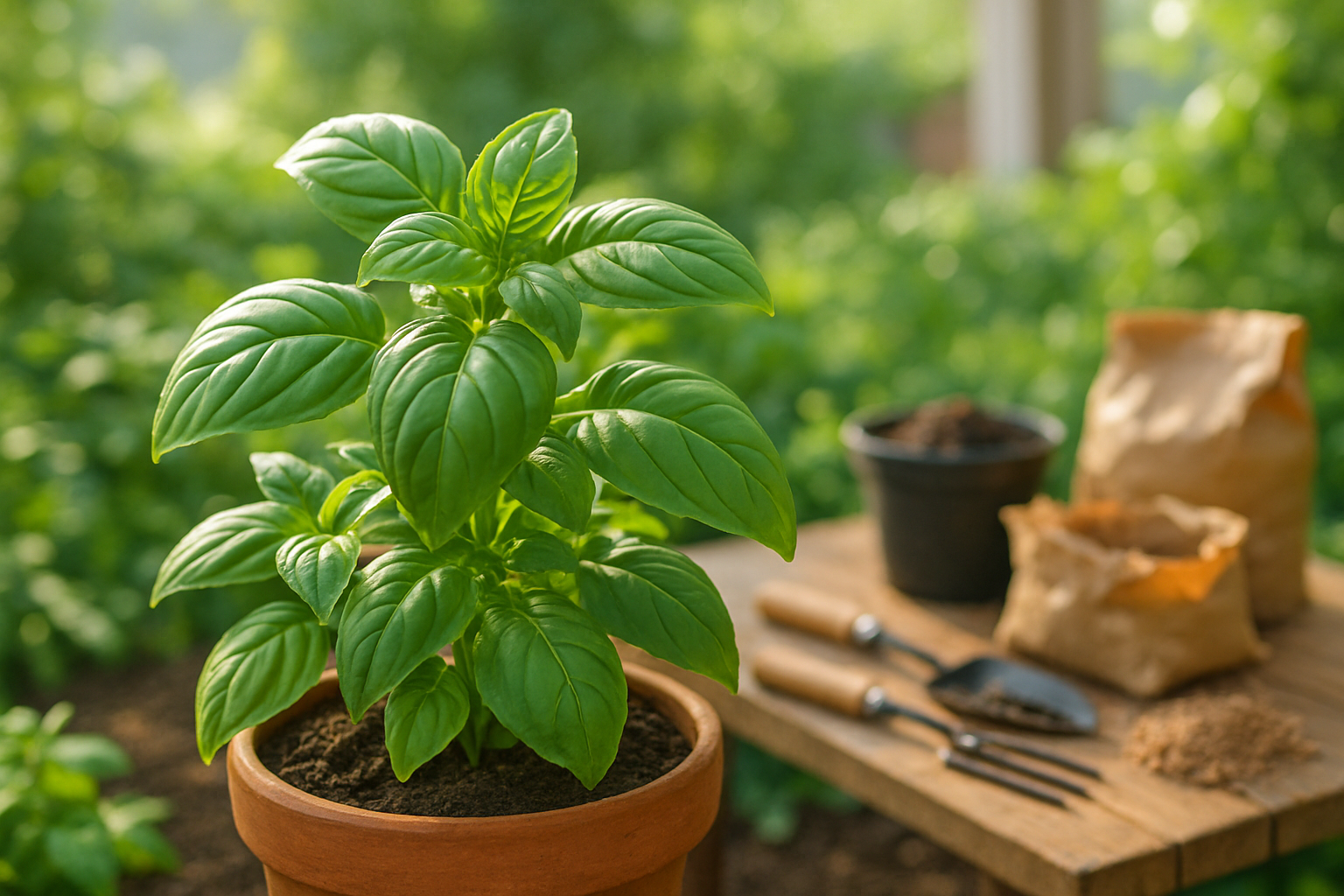Understanding Basil’s Nutritional Needs
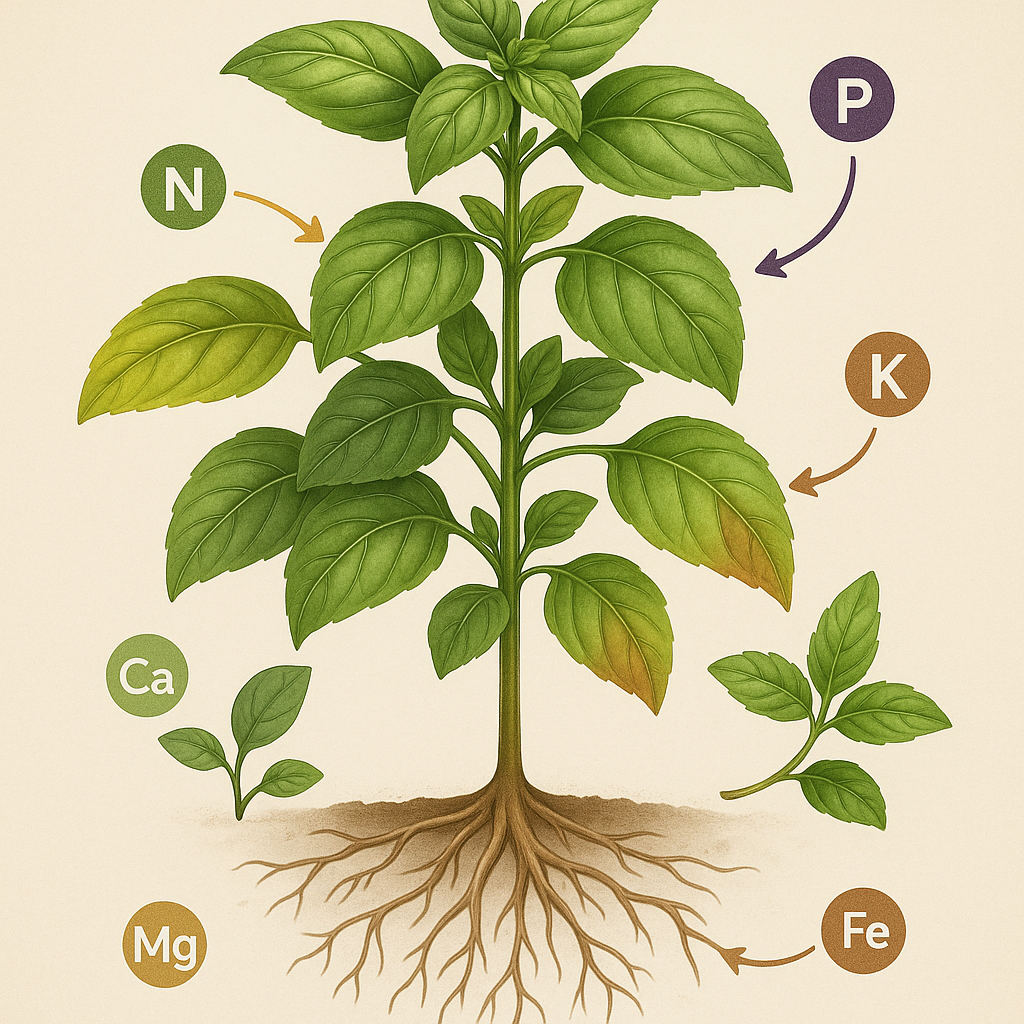
Basil thrives best when its nutritional needs are carefully balanced, starting with the three essential macronutrients: nitrogen, phosphorus, and potassium. Nitrogen is key for lush, green foliage, which is the main harvestable part of basil. If your basil leaves start turning pale or yellow, especially on older leaves first, this may indicate a nitrogen deficiency.
Phosphorus supports healthy root development and overall plant vigor. If you notice your basil growing slowly or displaying purple-hued leaves, it might be lacking phosphorus. Potassium helps basil ward off diseases and supports robust growth; a potassium-deficient plant may show brown leaf edges and poor resilience to stress.
In addition, trace minerals like calcium, magnesium, and iron are vital for strong stems and chlorophyll production. For example, yellowing between the veins (interveinal chlorosis) can hint at a magnesium shortage.
However, it’s important not to overdo fertilization. Overfertilized basil often grows rapidly but develops weak stems and overly soft, bland-tasting leaves. Excess nutrients can also cause leaf tip burn and stunted root systems.
For the best flavor and healthiest plants, apply a balanced, diluted fertilizer every few weeks during the growing season rather than heavy, frequent doses. Consider using compost or organic fertilizer for a steadier release of nutrients, and always monitor how your basil looks from week to week. Moderation is the golden rule when feeding basil; too little or too much can both negatively impact its growth and taste.
Choosing the Right Fertilizer for Basil
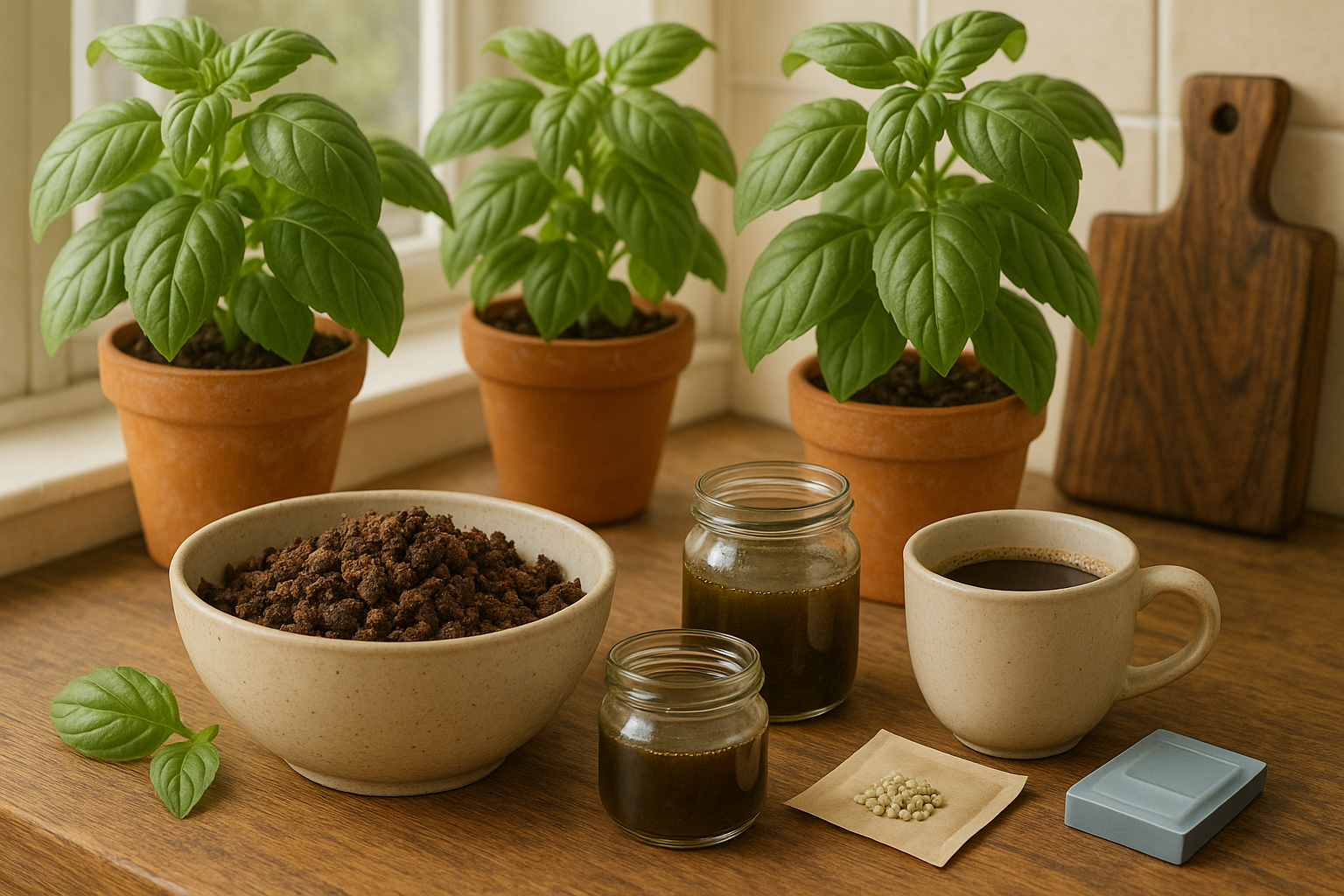
When it comes to fertilizing basil, choosing between organic and synthetic options can significantly affect your plant’s health and flavor. Organic fertilizers, such as compost or liquid seaweed, gently nourish your basil while improving soil health over time. These natural sources release nutrients slowly, reducing the risk of over-fertilization and harmful chemical buildup. This is especially crucial because basil is sensitive and can develop a bitter taste if “burned” by too much synthetic fertilizer.
Synthetic fertilizers, on the other hand, deliver fast and precise nutrients—ideal if your basil looks pale or is growing slowly. However, they can quickly cause salt buildup in the soil, potentially harming beneficial microbes.
For basil, aim for a balanced or slightly nitrogen-focused N-P-K ratio like 5-10-5 or 4-4-8. These ratios support leafy growth without overdoing phosphorus or potassium.
Here are some safe and effective DIY fertilizer options:
- Compost: Adds gentle nutrients and improves soil structure.
- Diluted coffee grounds: Supplies nitrogen but use sparingly to avoid excess acidity.
- Liquid seaweed: Provides a mineral boost and helps basil cope with stress.
Avoid “weed-and-feed” products, high-nitrogen lawn fertilizers, or any fertilizers not labeled for edibles, as these can introduce harmful residues or cause nutrient imbalances.
In summary, organic fertilizers are generally safest for basil’s delicate leaves and flavor. That said, a cautious approach with balanced synthetic blends can help revive weak plants. Fertilize sparingly every 3-4 weeks and always water afterward to prevent root burn.
How and When to Fertilize Basil
Fertilizing basil at the right time and with proper care can make a huge difference in your plant’s health and flavor. When basil is just a seedling—whether sown indoors or outside—fertilizing isn’t necessary until the first set of true leaves appears. At this stage, use a diluted liquid fertilizer, mixing it to about a quarter of the recommended strength, and apply it once every 3-4 weeks.
For established basil plants, both in garden beds and containers, switch to a half-strength fertilizer every 4-6 weeks during the growing season. Container-grown basil often needs nutrients more frequently than those in the ground due to quicker soil depletion, so watch for pale leaves or slow growth.
When applying fertilizer, always water the basil first to avoid root burn, then add the diluted fertilizer around the base of the plant, steering clear of the leaves to prevent scorching. Granular fertilizers can also be gently scratched into the soil, but don’t overdo it—basil prefers a light touch.
Overfertilizing is a common mistake that can lead to lush, tasteless leaves or root damage. Classic signs include yellowing or curling leaves, stunted growth, or a buildup of white crust on the soil. If you spot these issues, flush the soil with plenty of water to help wash away excess fertilizer and hold off feeding for a few weeks.
A good rule of thumb is: less is more. Containers can dry out and accumulate salts faster, so periodically pour water through the soil until it runs out of the bottom to keep things fresh. By matching your fertilizing routine to your basil’s stage and setting, you’ll enjoy healthier plants and more flavorful harvests all season long.
Fertilizing Basil in Containers vs. Ground
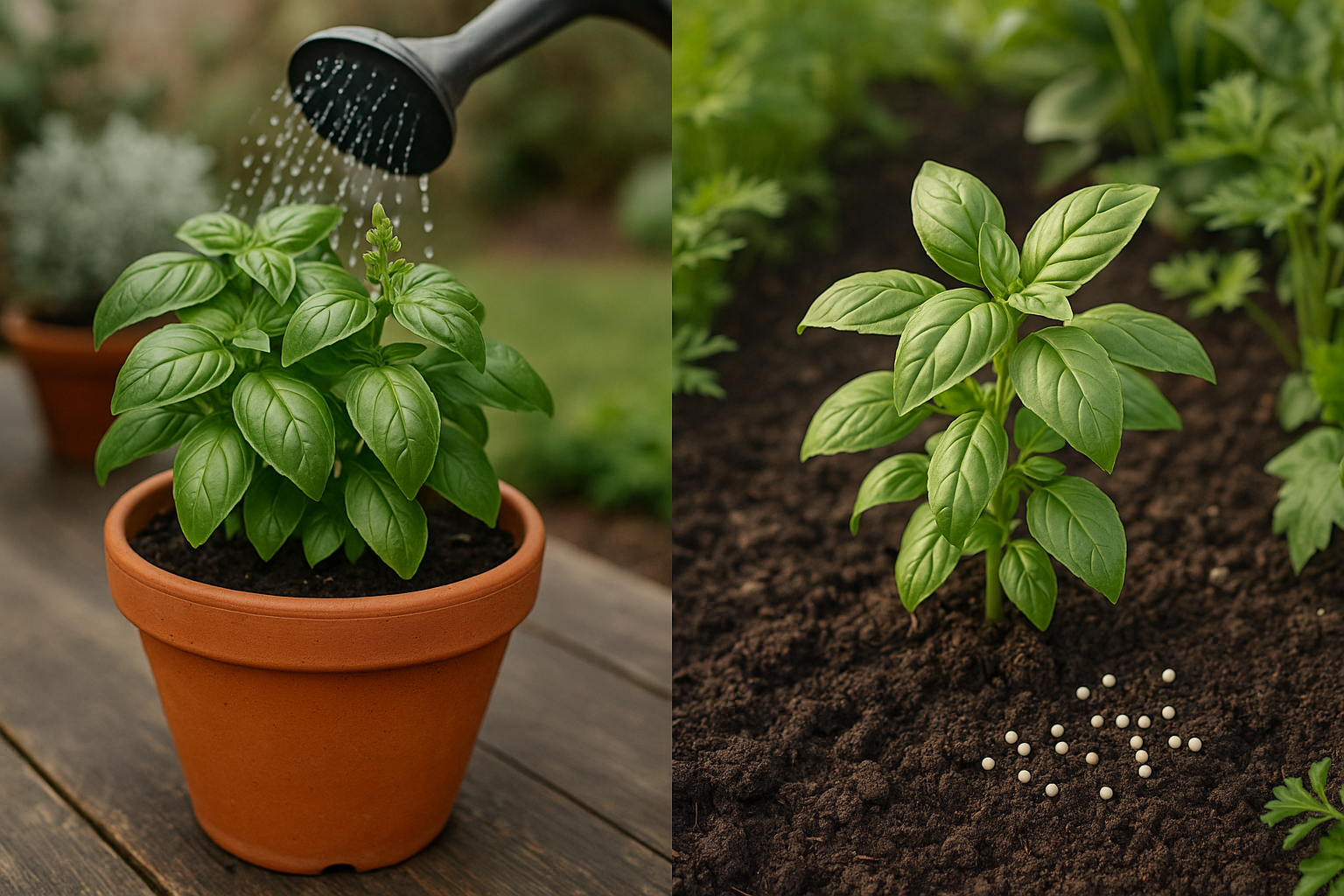
Fertilizing basil in containers is a bit different than tending to plants in the ground, mainly because of how nutrients and water behave in pots. Potted basil relies entirely on you for nutrients, since the limited soil volume quickly becomes depleted, especially after frequent watering—which flushes out minerals faster.
This means container basil typically needs a regular feeding schedule: use a balanced, water-soluble fertilizer diluted to half strength every two to four weeks during the peak growing season. Organic options like fish emulsion or liquid seaweed are gentle and encourage healthy growth.
In contrast, in-ground basil can draw nutrients from a wider area and may only need a slow-release fertilizer at planting time, followed by a light side-dressing halfway through the season.
Drainage and Watering
Drainage is a critical challenge in containers. Always use pots with holes at the bottom and loose, well-draining potting mix to prevent soggy roots, which can cause yellowing and nutrient deficiencies even if you’re fertilizing correctly.
Watering for potted basil should be frequent but cautious—water until it drains out, but don’t let the container sit in water. For ground basil, roots can search for moisture, so deep, infrequent watering is better.
Signs of Nutrient Issues
Keep an eye on your basil’s leaves:
- Pale or slow-growing plants indicate a need for nutrients.
- Burnt leaf edges usually mean too much fertilizer.
With a little attention to feeding and watering, both potted and in-ground basil can thrive, but container plants need your help more often to stay healthy and lush.
Common Fertilizing Mistakes to Avoid
One of the most common fertilizing mistakes with basil is overfertilizing, which can actually do more harm than good. Too much fertilizer can cause rapid, weak growth, burn the plant’s roots, and diminish the signature flavor of basil leaves. It’s best to use a balanced, slow-release fertilizer and follow the recommended dosage—less is often more with basil.
Another pitfall is neglecting soil testing. Without testing your garden soil, you won’t know if nutrients are already sufficient, which can lead to a buildup of salts or imbalances that stress plants. For optimal results, test your soil once a season so you can tailor your fertilizing plan and avoid unnecessary applications.
Applying fertilizer directly onto leaves or stems is also a frequent error; this can burn plant tissue and introduce disease. Instead, always apply fertilizer to the base of the plant and water immediately afterward to help nutrients reach the roots.
Lastly, be wary of fertilizing during hot, dry spells, as stressed plants are more susceptible to fertilizer burn. For healthier basil and higher yields, stick to a regular feeding schedule, water consistently, and pay attention to plant response—healthy, rich green leaves are your best indicator of success. If you notice yellowing, leaf burn, or limp plants, take a step back and reassess your approach to avoid repeated mistakes.
Natural Fertilizer Alternatives and How to Use Them
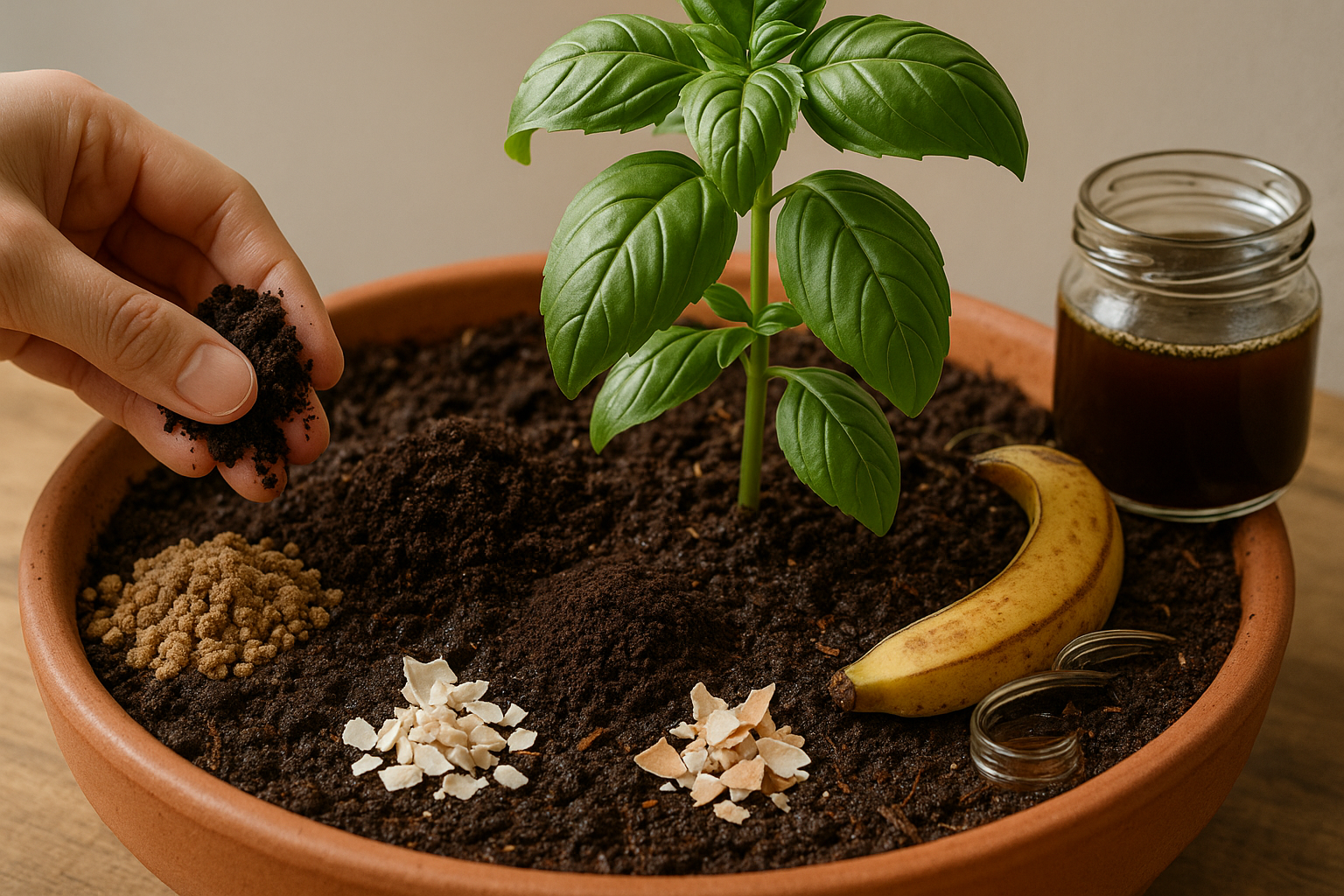
Natural fertilizer alternatives offer a simple, eco-friendly way to boost your basil plants without resorting to harsh chemicals. Home remedies like compost tea, worm castings, and coffee grounds are easy to source and gentle on herbs.
Compost tea can be made by soaking kitchen compost in water for a day or two, then straining and applying the nutrient-rich liquid to the soil every two to four weeks. It’s a great way to recycle fruit and veggie scraps, but be sure the compost is fully decomposed to prevent spreading pathogens.
Worm castings—a fancy name for earthworm poop—are loaded with microorganisms and nutrients; just sprinkle a thin layer around the base of your basil once a month and gently work it into the topsoil.
Coffee grounds, when used properly, can give basil a mild nitrogen boost, but moderation is key. Always use grounds that are spent (already brewed), and add no more than a thin layer once a month, mixing it into the soil to avoid mold or attracting pests.
As for kitchen scraps, stick with those that break down easily, like eggshells (crushed for calcium) and banana peels (buried to prevent pests and odor). Avoid adding meat, dairy, or anything oily, as these attract unwanted critters.
Remember, basil prefers to be fed lightly; too much of even natural fertilizer can lead to lush leaves but weak flavor or root rot. If your plant looks happy—with vivid green leaves and steady growth—it’s getting enough. When in doubt, less is more.
